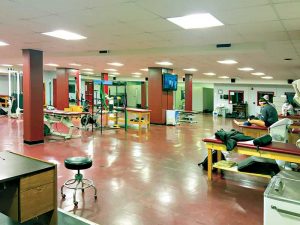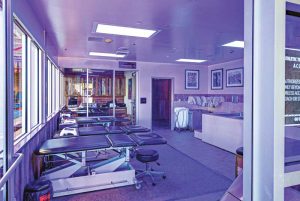The COVID-19 pandemic and its subsequent variants have focused the public’s attention on infectious disease and its transmission. While this has always been an important consideration in acute healthcare, it has become increasingly important in non-healthcare applications, such as education, commercial offices, indoor sports venues, retail spaces, and other congregate settings.
While the recommended mitigation for disease transmission is vaccination, there are other precautions, such as physical barriers (masking), distance (social distancing), and limiting the time of exposure. Each of these methods are impactful.
The role of the environment in disease transmission through contaminated surfaces or contaminated air is well established as a matter of general principle, beginning with the father of modern surgery, Joseph Lister (“It is not the air, it is something in the air”). Subsequent observations that sunlight heals wounded soldiers by Florence Nightingale in 1863, and that sunlight kills tuberculosis (TB) by Robert Koch in 1890, formed the basis for the commonly understood principles of ultraviolet (UV) disinfection today.
Reducing the bioburden
Bioburden primarily comes from people shedding microbes from their bodies (e.g. face, hair, and hands) and clothing, especially shoes. It is spread by people touching, moving, and working. Bioburden travels on equipment, materials, bags, tools, and anything being transferred from point to point. Sanitization or cleaning with an effective disinfectant is critical to all surfaces and equipment.
The pandemic has proven the importance of reducing the bioburden between regular sanitation and cleanings. Now with students back in classrooms, and employees returning to their workplaces, it is more vital than ever to mitigate viral transmission.
Not all germicidal lighting is created equal

The pandemic has spurred tremendous interest for any products that can mitigate harmful pathogens, including whole-room germicidal lighting. Not all germicidal lighting is safe for humans, and knowing the differences is critical. There is evidence demonstrating the persistent contamination of environmental surfaces despite traditional cleaning and disinfection methods. This risk has led to the widespread need for reassessing traditional cleaning protocols and for using secondary disinfection technologies.
UV disinfection is a type of no-touch technology which has shown to be a successful adjunct to manual cleaning in reducing environmental bioburden. Unfortunately, there is no government oversight for the safety of systems using UV or visible light to disinfect. The Food and Drug Administration (FDA) regulates the use of medical devices whose primary intent is to treat people, the Environmental Protection Agency (EPA) regulates the use of chemical disinfectants, and Occupational Safety and Health Administration (OHSA) focuses on ionizing and/or coherent radiation. Fortunately, there is a well-established international standard, International Electrotechnical Commission (IEC) 62471 which covers the safety of UV and visible light based on human and animal injury data. Using the IEC classification, all UV lighting is assigned a risk level, whereas 405 nanometer (nm) visible light is classified as ‘risk exempt,’ meaning it is safe for room occupants.





